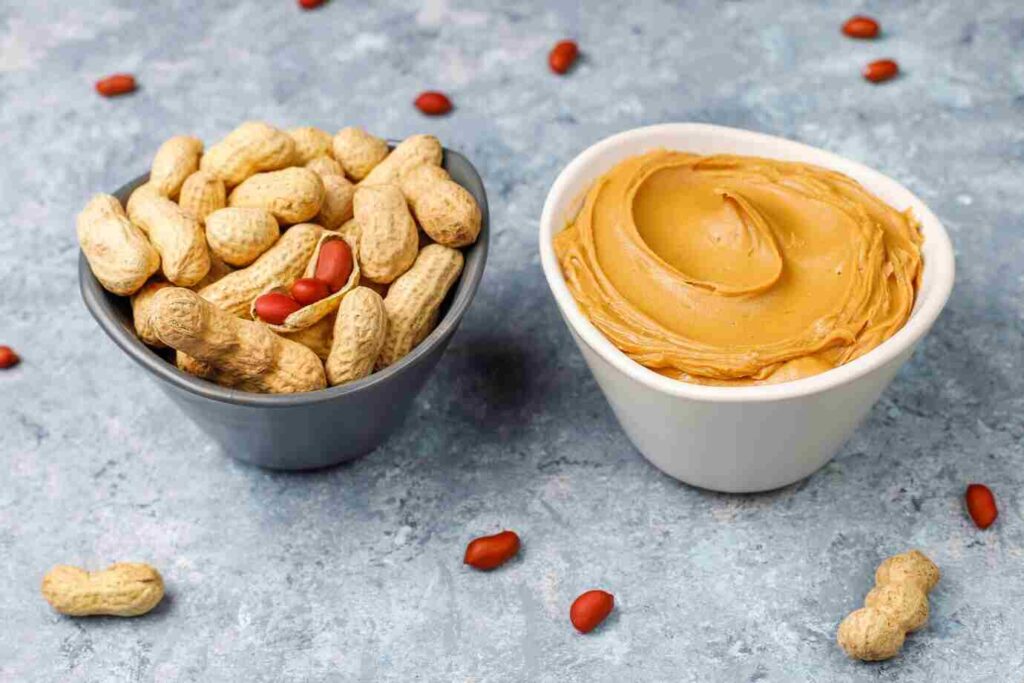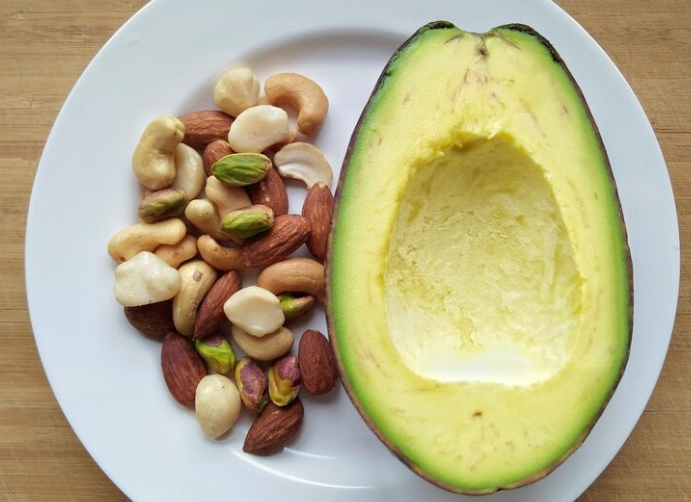Vitamin E is one of the most powerful nutrients when it comes to protecting and nourishing your skin. Known for its strong antioxidant properties, it helps shield the skin from UV damage, pollution, and early signs of aging. It also supports skin repair, boosts moisture retention, and helps maintain a smooth, radiant complexion.
While many people turn to creams and serums with vitamin E, one of the best ways to get its full skin benefits is through your diet. That’s because vitamin E works best from the inside out—fighting oxidative stress, supporting cell regeneration, and improving overall skin tone.
In this article, we’ll highlight the top vitamin E foods for skin—each backed by nutritional science. If you’re looking to boost your vitamin E for skin health, these foods are an easy and natural way to get started. Whether you’re battling dryness, dullness, or just want a skin-friendly diet, these options belong on your plate.
Why Vitamin E is Essential for Skin Health
Vitamin E is one of the most powerful antioxidants for your skin. It helps protect skin cells from oxidative stress caused by UV rays, pollution, and other environmental damage. This makes it a crucial nutrient for keeping your skin looking youthful and healthy.
One of the top vitamin E skin benefits is its ability to support skin repair. It promotes healing by speeding up cell regeneration, making it effective for reducing scars, acne marks, and sun damage. It also improves skin hydration and elasticity by strengthening the skin barrier, helping your skin retain moisture longer.
Vitamin E’s anti-inflammatory properties soothe irritated skin and may reduce redness and swelling. Over time, it can minimize fine lines, dark spots, and other visible signs of aging. That’s why many skin creams and oils use this powerhouse nutrient as a main ingredient.
Top 10 Vitamin E Foods for Healthy Skin
Vitamin E is a fat-soluble antioxidant that plays a key role in protecting the skin from oxidative stress, which can lead to premature aging and damage. Here are the top vitamin E foods backed by science to support healthy, glowing skin.
1. Sunflower Seeds
Sunflower seeds are an excellent source of vitamin E. A study published in the Journal of Nutrition highlighted that sunflower seeds are particularly high in tocopherols, the active form of vitamin E, which help protect the skin from oxidative damage. The antioxidants in sunflower seeds support skin health and may reduce the risk of UV-induced damage.
2. Almonds
Almonds are rich in vitamin E, and research has shown that they help improve skin hydration and elasticity. A clinical trial published in the Journal of the American College of Nutrition found that almonds enhance skin appearance, helping to maintain skin elasticity. Consuming almonds regularly can promote a youthful, radiant complexion.
3. Spinach
Spinach is a powerhouse of vitamins, including vitamin E. According to a study published in The American Journal of Clinical Nutrition, spinach is rich in lutein and other antioxidants, which contribute to skin protection by neutralizing free radicals that cause aging. These compounds also support skin repair and reduce inflammation.
4. Avocados
Avocados are not only high in healthy fats but also packed with vitamin E, which is beneficial for skin elasticity and hydration. Research in the International Journal of Dermatology indicates that avocado oil improves skin barrier function, offering deep hydration and preventing water loss. The monounsaturated fats in avocados also support a healthy, supple skin texture.
5. Hazelnuts
Hazelnuts are rich in vitamin E, with studies showing that they may help reduce inflammation in the skin and provide antioxidant protection. A study in Food Chemistry found that hazelnuts possess a high concentration of vitamin E, which helps combat oxidative stress and maintain skin health.
6. Peanuts and Peanut Butter

Peanuts and peanut butter are not only affordable but also excellent sources of vitamin E. Research published in The Journal of Agricultural and Food Chemistry found that peanuts contain a unique form of vitamin E called gamma-tocopherol, which plays a key role in reducing oxidative damage and promoting skin health.
7. Olive Oil
Olive oil is a rich source of vitamin E and is well-known for its anti-inflammatory and antioxidant properties. A study in The Journal of Nutrition highlighted that the antioxidants in olive oil help protect the skin from oxidative damage and improve skin hydration. Regular use of olive oil in cooking or as a topical application can support skin health.
8. Pumpkin
Pumpkin is packed with beta-carotene, antioxidants, and vitamin E, all of which are crucial for skin health. Research in the Journal of Food Science and Technology shows that pumpkin’s antioxidant-rich profile supports skin repair and reduces signs of aging, such as wrinkles and fine lines. The high fiber content of pumpkin also promotes skin detoxification.
9. Mango
Mangoes are rich in both vitamin E and vitamin C, making them an excellent fruit for skin health. A study in Molecular Nutrition & Food Research suggested that the antioxidants in mangoes, including vitamin E, play a protective role in maintaining healthy skin and reducing oxidative stress. Mangoes are also known to brighten the skin and improve its texture.
10. Broccoli
Broccoli is a low-calorie, nutrient-dense vegetable that contains significant amounts of vitamin E. Research has shown that the antioxidants in broccoli, including vitamin E, help protect the skin from damage caused by environmental stressors. Broccoli also contains sulforaphane, which has been found to support skin detoxification and reduce inflammation.
Incorporating these top vitamin E foods into your meals can help keep your skin healthy, soft, and radiant. Focus on whole, plant-based options and healthy fats for the best results. Want beautiful skin? Start with what’s on your plate.
How to Include These Foods in Your Diet
Incorporating vitamin E-rich foods into your daily meals is easier than you might think. Here are some simple, practical tips to help you boost your skin health and nourish your body with essential nutrients.
- Add Seeds and Nuts to Oatmeal or Salads
Sunflower seeds, almonds, and hazelnuts are all great options to sprinkle over your morning oatmeal or add to a hearty salad. These crunchy additions will provide a delicious boost of vitamin E, healthy fats, and protein to your meals. Try a mix of seeds and nuts for extra variety and nutrition. - Use Olive Oil for Sautéing or Dressings
Olive oil is a fantastic way to infuse vitamin E into your diet. Use it as a base for sautéing vegetables, drizzling it over roasted dishes, or mixing it into your favorite salad dressings. Its rich, mild flavor pairs perfectly with various dishes while providing powerful antioxidants for your skin. - Make Smoothies with Spinach, Mango, and Avocado
Smoothies are an easy and fun way to consume vitamin E-rich fruits and vegetables. Blend spinach, mango, and avocado together for a delicious, creamy drink packed with antioxidants and essential fatty acids. This vibrant combination not only tastes great but also supports your skin from the inside out. - Snack on Almonds or Hazelnuts Daily
Keep a small handful of almonds or hazelnuts as a snack throughout the day. They’re convenient, portable, and packed with vitamin E and healthy fats that promote glowing skin and overall well-being. Make it a habit to enjoy these nuts as part of your daily routine.
By incorporating these vitamin E-rich foods into your meals, you’ll be fueling your body with skin-loving nutrients that promote a youthful and healthy complexion.
Can You Get Enough Vitamin E from Food Alone?
In most cases, it’s entirely possible to meet your vitamin E needs through food alone. A diet rich in nuts, seeds, leafy greens, and healthy oils typically provides adequate amounts of this essential nutrient. Foods like sunflower seeds, almonds, spinach, and avocados are excellent sources of vitamin E, helping to support your skin, immune system, and overall health.
While vitamin E supplements can help if you’re diagnosed with a deficiency, they should not be the first line of defense. It’s always better to get your vitamins from natural food sources, as they offer a broader range of nutrients that work synergistically for better health outcomes.
Over-supplementation of vitamin E can carry risks, such as increased bleeding risk and potential interactions with medications. Therefore, it’s essential to consult a healthcare professional before starting supplements, especially if you already have a well-balanced diet rich in vitamin E.
In summary, for most people, food sources should be the primary way to get vitamin E, with supplements only considered if a deficiency is confirmed.
FAQs About Vitamin E and Skin Health
1. What is the daily requirement of vitamin E for healthy skin?
The recommended daily intake of vitamin E for most adults is 15 mg (22.4 IU). This can vary slightly depending on age, gender, and specific health needs. Getting enough vitamin E supports skin health by fighting oxidative stress and promoting skin repair. Foods rich in vitamin E, like almonds and sunflower seeds, can help you meet this requirement.
2. Is vitamin E better from food or capsules?
While vitamin E capsules can be effective, food sources are generally preferred. Vitamin E in foods comes with additional nutrients like fiber, antioxidants, and healthy fats, which enhance absorption and provide overall health benefits. Foods like almonds, spinach, and avocado are excellent choices for boosting your intake naturally.
3. Which fruit is highest in vitamin E?
Mangoes are among the fruits highest in vitamin E, making them an excellent option for boosting skin health. They also provide additional antioxidants that help brighten the complexion and reduce signs of aging. Avocados, though technically a fruit, also contain high levels of vitamin E and healthy fats that contribute to healthy, hydrated skin.
4. How long does it take to see skin benefits from vitamin E?
The time it takes to see visible benefits from vitamin E on your skin can vary, but typically, you may start to notice improvements in skin hydration and appearance within 2-4 weeks of consistent use. If you are incorporating vitamin E through both food and topical products (like oils), you may see more noticeable changes in your skin’s texture and tone over time.
Conclusion
Glowing, healthy skin starts from the inside—and vitamin E foods for glowing skin are a simple, natural way to support it. This powerful antioxidant helps protect your skin from damage, boosts elasticity, and promotes a youthful glow. By building a vitamin E rich diet with whole foods like almonds, sunflower seeds, spinach, and avocados, you’re giving your skin exactly what it needs to thrive.
Consistency is key. You don’t need fancy products when your meals are already packed with nutrients that support hydration, repair, and radiance. So fill your plate with these skin-loving foods and nourish your beauty from within. The results won’t just show up in your skin—they’ll shine through your confidence, too.
